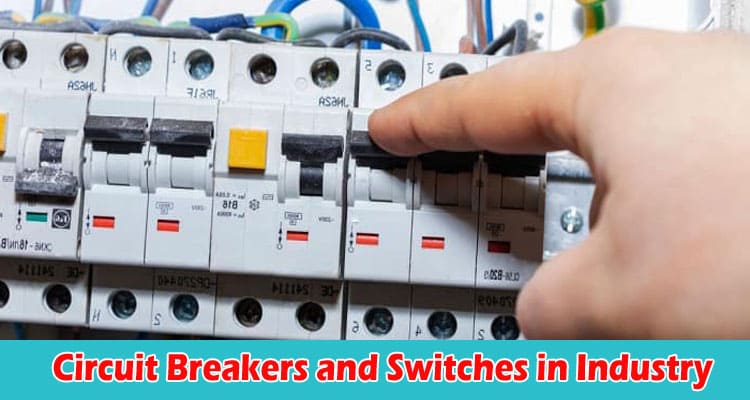In industrial settings, the roles of circuit breakers and switches are indispensable in managing power and safeguarding equipment. These components are critical in controlling and protecting the electrical power systems that run our industries. By understanding their functionality and importance, industries can ensure a robust and secure electrical system.
Understanding Circuit Breakers
Circuit breakers, a type of electrical safety device, act as a guardian against electrical hazards. They function by automatically cutting off the power when a fault, such as an overload or short circuit, is detected. This protective measure helps prevent equipment damage and electrical fires. In the industrial realm, various types of circuit breakers are used, including magnetic, thermal, and hydraulic-magnetic. Magnetic breakers trip when the electromagnetic field in a coil becomes strong enough to release a latch. Thermal breakers use a bimetallic strip that bends when heated by excess current, triggering a trip mechanism. Hydraulic-magnetic breakers combine these two methods, offering a reliable solution across different environmental conditions. Brands like Schneider Electric provide a range of circuit breakers, ensuring industries have access to the best fit for their unique power management needs.
The Role of Switches in Industrial Systems
Switches in industrial systems serve as controllers of power flow, playing a crucial role in system control and safety. They come in various forms: manual switches allow direct human control over the power flow, automatic switches respond to changes in the electrical system without human intervention, and transfer switches facilitate the transition of power sources in case of an outage. This diversity in switch types ensures that industrial systems can maintain functionality and safety under various scenarios.
Coordination between Circuit Breakers and Switches
The effective coordination of circuit breakers and switches is critical in improving the efficiency and reliability of industrial electrical systems. This coordination ensures that these protection mechanisms operate in a synchronized manner, reducing system downtime and preventing potential equipment damage. In a scenario when both a circuit breaker and a switch are used, for example, the circuit breaker is designed to trip quickly in reaction to a fault, effectively isolating it. Concurrently, the switch allows operations to continue by effortlessly switching the power load to another circuit or source. This dual mechanism emphasizes the significance of strategic planning in electrical system design to ensure continuous operation and the protection of essential industrial operations.
Safety and Compliance Standards
Safety standards in the electrical industry are stringent, and compliance with these standards is non-negotiable. Circuit breakers and switches must meet specific requirements to ensure they can effectively protect against hazards like electrical overloads and short circuits. Non-compliance with these standards can lead to serious consequences, including equipment damage, operational disruptions, and safety hazards. Understanding and adhering to these safety standards is essential for any industry relying on electrical systems.
Technological Advancements and Future Trends
The electrical component industry is rapidly advancing, particularly with the emergence of smart circuit breakers and switches. These innovative devices are equipped with capabilities such as predictive maintenance and integration with the Internet of Things (IoT), significantly boosting both the efficiency and safety of industrial power management. Looking ahead, the sector is poised for further advancements, with a focus on integrating more sophisticated automation and data analytics. This progression aims to facilitate even more proactive and efficient power management approaches, revolutionizing how industrial electrical systems are monitored and managed.
Choosing the Right Components for Your Industrial Needs
Choosing appropriate circuit breakers and switches is essential for ensuring the safety and operational efficiency of industrial electrical systems. It involves assessing various factors including the nature of the electrical load, prevailing environmental conditions, and the overall design of the electrical system. Expert guidance, such as that offered by Schneider Electric, is invaluable in this process. These professionals can offer customized solutions that not only align with the unique demands of the industry but also adhere to stringent compliance and safety standards.
Conclusion
Circuit breakers and switches are fundamental components in industrial electrical systems. Their correct selection, coordination, and compliance with safety standards ensure the protection and efficient operation of these systems. As technology advances, smart solutions, and expert consultation will continue to play a pivotal role in maintaining robust and secure industrial electrical systems.







